| |
Texas oil gusher ushered in modern age of American transportation
By Tom Adkinson
May 24, 2024
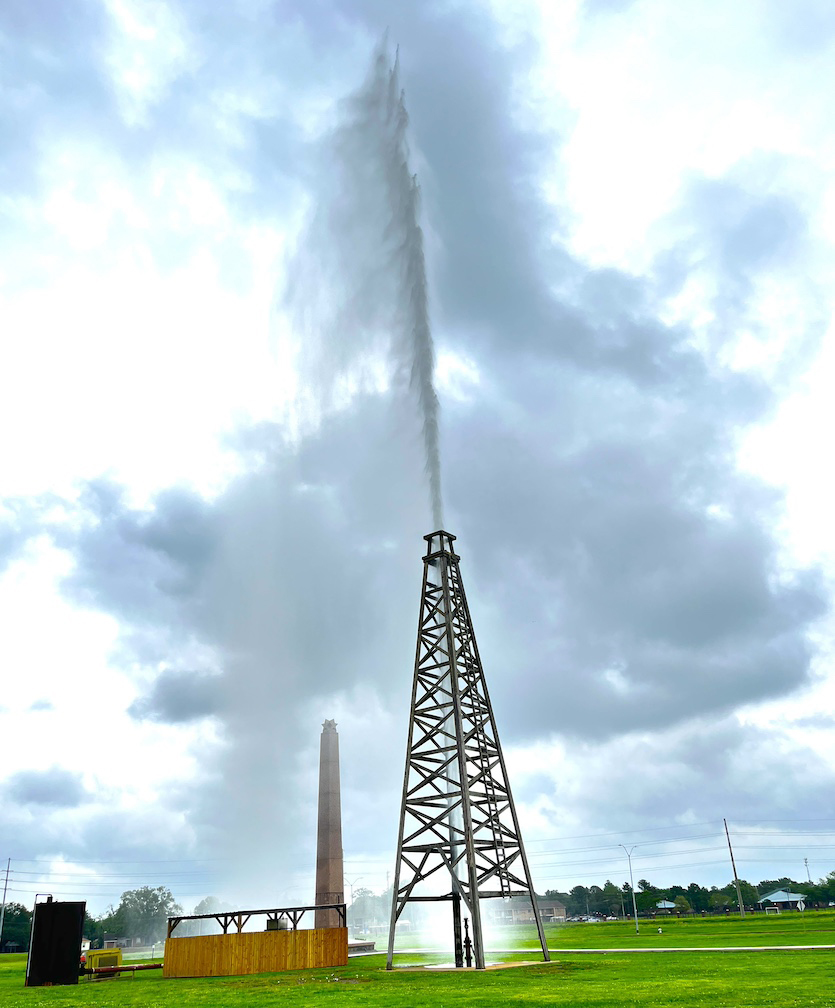
Water, not oil, blasts skyward in a simulated reproduction of the “Lucas Gusher” of Jan. 10, 1901. Image by Tom Adkinson
|
|
BEAUMONT, Texas – “It’s a gusher! What are we gonna do?”
Those are words you don’t want to hear right after you’ve cut yourself badly, but they are exactly what you would want to hear if you were drilling for oil and a geyser of black gold was leaping into the sky.
Words of that nature – perhaps laced with a few choice expletives – echoed through the southeast Texas air just south of Beaumont on Jan. 10, 1901. That was the day the “Lucas Gusher” burst out of a salt dome in what became the Spindletop oilfield. It changed the course of American history.
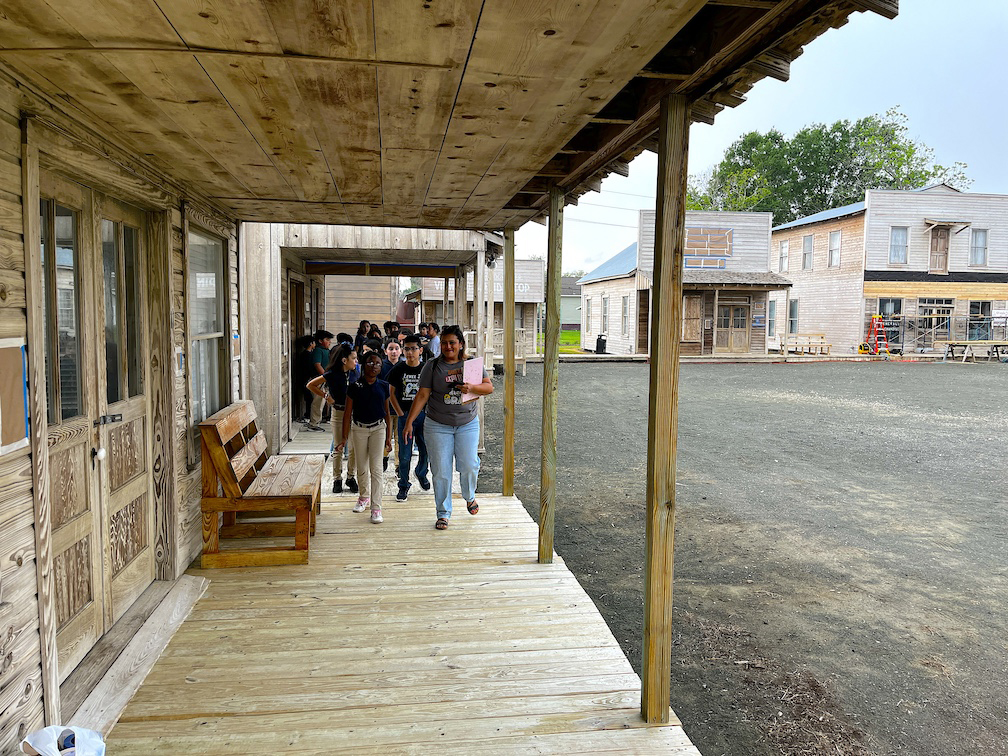
A school group progresses along the wooden sidewalks of the replica historic buildings of the Spindletop Boomtown Museum. Image by Tom Adkinson
|
Learning about that discovery – and seeing a re-enactment of the gusher – are what draw you to a corner of the Lamar University campus to explore the Spindletop Boomtown Museum. The museum, a collection of replica historic buildings and symbolic oil derricks, is a quiet place, making it a mental stretch to realize the land it sits on once was teeming with oilfield workers, speculators, merchants, barkeeps and probably some shady characters, too.
It was no secret that oil was near the surface here. Native Americans certainly knew, and Spanish explorers in 1543 used oil seeping from the ground to caulk their ships. The museum’s history notes that wildcatters drilled at Spindletop in 1893 and 1896, but nothing big happened until 1901. At that point, Texas accounted to less than 1 million of the 63 million barrels of oil produced in the entire nation.
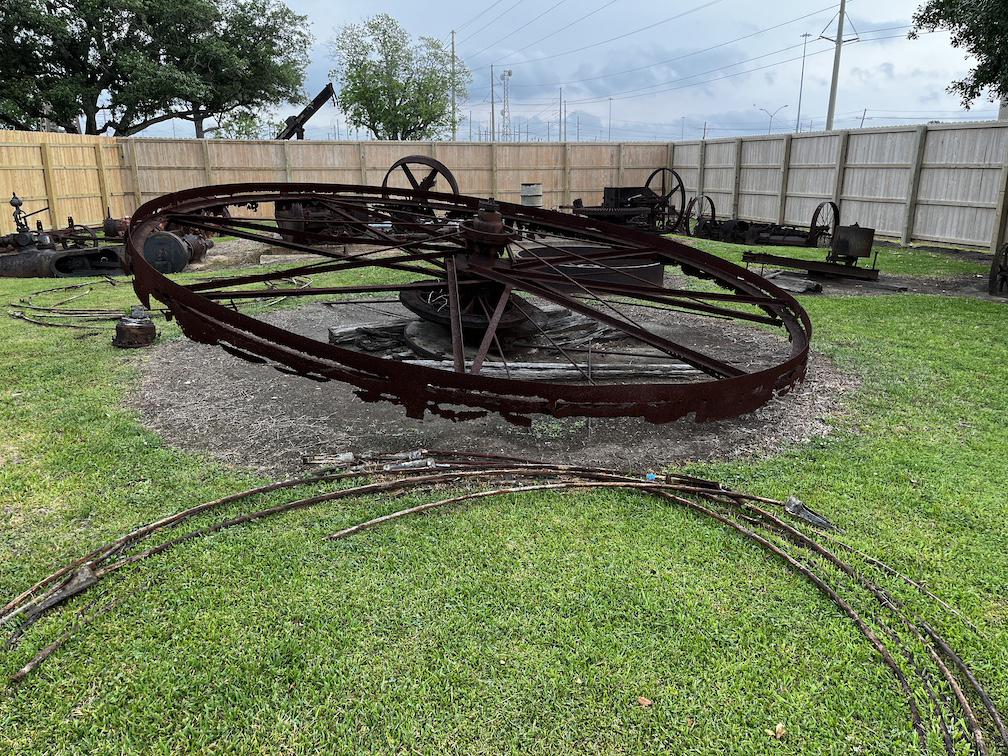
Derelict pieces of drilling equipment are on display at the Spindletop Boomtown Museum in Beaumont. Image by Tom Adkinson
|
|
Anthony Lucas, an expert on salt dome formations and true believer that oil was right under his feet, started a well on Oct. 27, 1900. The museum’s history picks up the story:
“On Jan. 10, mud began bubbling from the hole. The startled roughnecks fled as six tons of four-inch drilling pipe came shooting out of the ground. After several minutes of quiet, mud, then gas, then oil spurted out. The Lucas geyser, found at a depth of 1,139 feet, blew a stream of oil over 100 feet high until it was capped nine days later and flowed an estimated 100,000 barrels a day.”
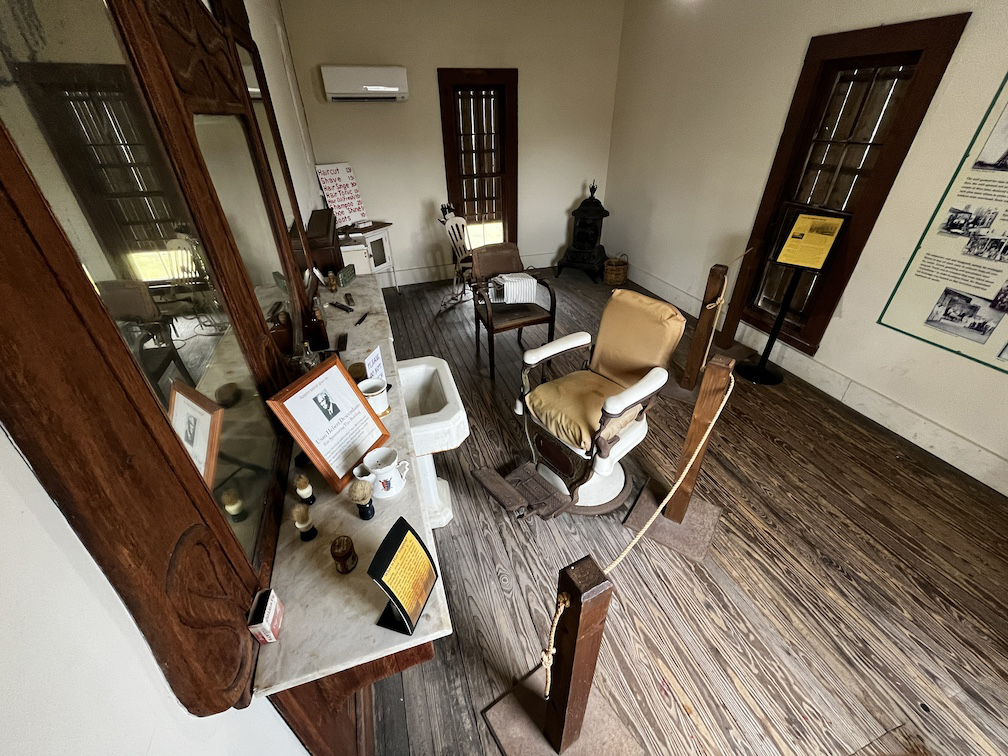
When Beaumont erupted from 9,000 to 50,000 residents, even barber chairs were rented as places to sleep overnight. Image by Tom Adkinson
|
Beaumont at the time was a lumber and shipping town of 9,000 residents. Almost overnight, the population was 50,000. A recreated barbershop in the museum notes that lodging was so scarce that the barber rented his chairs so people could sleep in them. Others slept on evening trains to Houston and rode back the next morning to go back to work.
Land was sold in portions of 1/64 of an acre – about the size of an oil derrick’s floor. Photos from the boom times show a veritable forest of oil derricks – 138 went up in 1901 alone. Oil was so abundant that its value was 3 cents a barrel. Water, however, was $6 a barrel.
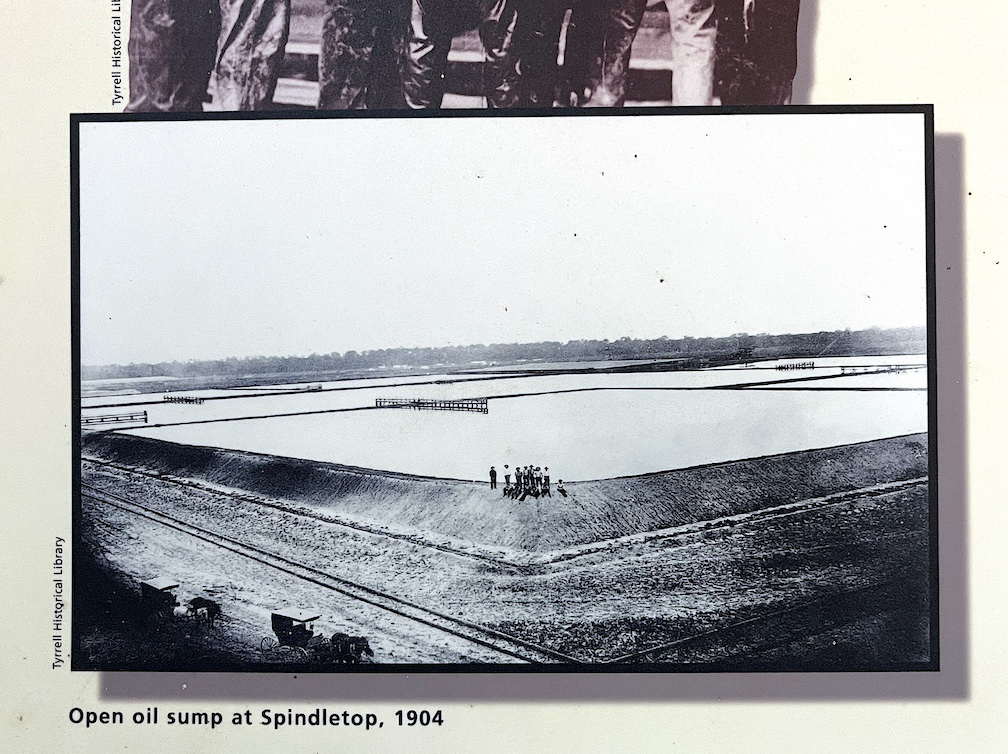
This photo from the Tyrell Historical Library shows open lakes of unrefined oil at Spindletop. Note the workers standing on the corner. Image by Tom Adkinson
|
|
It truly was an oil boom at Spindletop, but the area was practically a ghost town a decade after the Lucas Gusher. However, the spectacle of 1901 pushed investors to search for oil and natural gas throughout Texas. Cheap oil revolutionized American transportation and industry, and Spindletop gave rise to companies such as the Texas Company (later Texaco), Gulf Oil, Sun Oil, Magnolia Petroleum (later Mobil) and Humble (later Exxon).
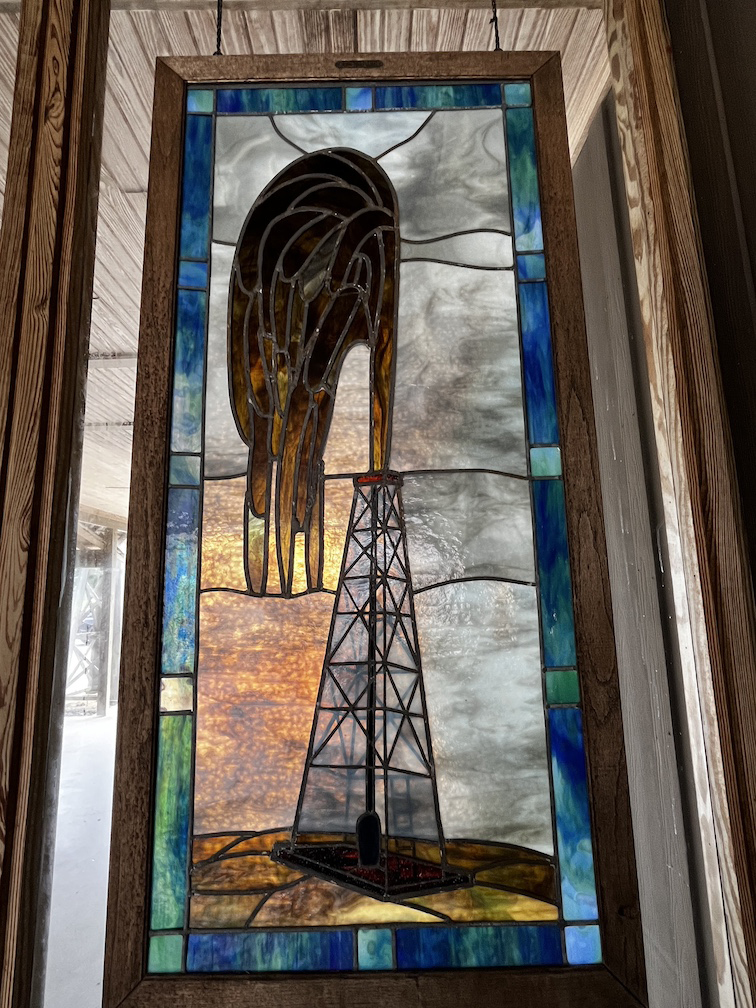
A stained-glass panel depicts one artist’s impression of how the Lucas Gusher looked in 1901. Image by Tom Adkinson
|
The museum’s buildings – arranged in a rectangle with a derrick in the middle – tell various stories about life in the boomtown years, but the museum’s showpiece is outside the rectangle.
It’s another derrick, this one 64 feet tall. At specified times, and with eager crowds looking on, a museum employee discreetly flips a switch. There’s a bit of a rumble and then a geyser erupts through the derrick to a height of 100 feet.
This time, the geyser is crystal clear water, not black crude oil, but spectators gain a fuller understanding of what happened at Spindletop on Jan. 10, 1901.
Trip-planning resources: Spindletop.org and BeaumontCVB.com
|



